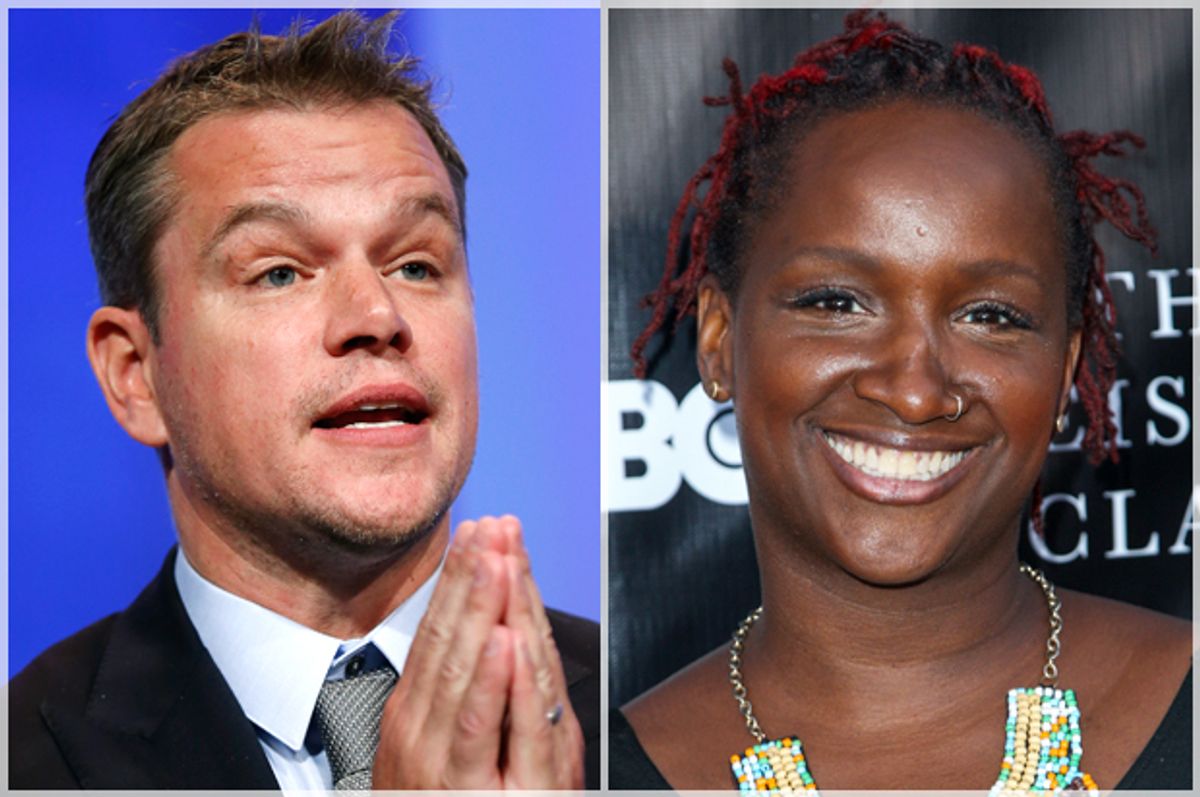Over the last day or so, Matt Damon has been scolded for naïve, short-sighted comments about diversity in television and movie productions. The issue, which came up when he lectured producer Effie Brown (who is also black) on the revived “Project Greenlight,” basically came down to this: Is it vital for the industry to ensure women and/or people of color are in decision-making artistic and business positions, or is it okay to trust white men — who dominate the industry still — to always make smart, fair storytelling choices on any given project?
In other words, do the people running the current system need to just look for “the best” candidates for each position, or do they need to be aware of the fact that just letting the system roll the way it has for decades has locked huge categories of people out of working in Hollywood?
Part of what startled observers here is that Damon does not have a reputation as a reactionary; at the end of the episode, he even thanked Brown for drawing his attention to the diversity issue, though he did not seem to be changing his position.
But a new look at the proportion of women working in Hollywood, and how they got there, demonstrates that critics of Hollywood homogeneity are right to continue to emphasize that when women are in charge, the number of women working come closer to reasonable percentages.
The survey – the 18th annual “Boxed In” study, from San Diego State University – finds that when a program has a female executive producer, more women get hired. This may seem obvious, but the specific findings, reported here in Variety, are interesting:
"During the 2014-15 season, on shows with at least one female exec producer, 42% of characters were female, compared to 35% of characters on shows with no female exec producers. Among writers, the difference was stark: 32% of writers were female on shows with a female exec producer, compared to 8% on shows with only male exec producers. Among directors, the difference was 18% vs. 10%, and among editors it was 37% vs. 13%.
Overall, Lauzen’s study found that women comprised 23% of exec producers, up 2% from the 2013-14 season. Among writers, 25% in the programs surveyed were female, a decline of 1% from 2013-14. Women accounted for 12% of directors, a decline of 1% from the prior frame. The number of women editors has reached 20%, a 4% gain from 2013-14. The number of female d.p.’s remains stubbornly low at 1%, unchanged from 2013-14."
It’s also worth noting that despite the increased talk about inequity in Hollywood, at some levels things seem to be going backward lately: “The WGA West’s most recent employment survey, covering 36 broadcast and cable networks, found that women accounted for 15.1% of exec producer positions in the 2013-14 season, a decline of 3.5% from the 2011-12 season.”
As with any discussion of systems and generalizations in a country as shallowly (as opposed to genuinely) individualistic as ours, this study – and the whole debate around it – is likely to be misinterpreted.
To be clear, no one is saying that an artist of color is always a better producer or director of photography or screenwriter, or whatever, than his or her white-male counterpart — or even more committed to social justice, as Clarence Thomas continues to demonstrate. At the individual level, it’s easy to caricature an argument that highlights racial and gender identity: Does it mean Lenny Kravitz is objectively better at his job than Ryan Adams? Not necessarily.
But when it comes to the makeup of Hollywood, or a private school or university, or any other field or institution, we’re not talking about an isolated incident. We’re talking about a system built on an array of structures – old families and unpaid internships that only privileged people can pursue, connections that come from moving in the right circles, and so on.
Systems, by nature, reinforce themselves, so if you don’t do something to alter these systems, you get the same result over and over again. It’s what we’ve seen in Hollywood for decades, and the San Diego State study shows how it works out in real careers and real lives. And the lesson I hope Damon takes from this and the other discussion around the issue is that you can believe in quality and fairness at the same time.


Shares